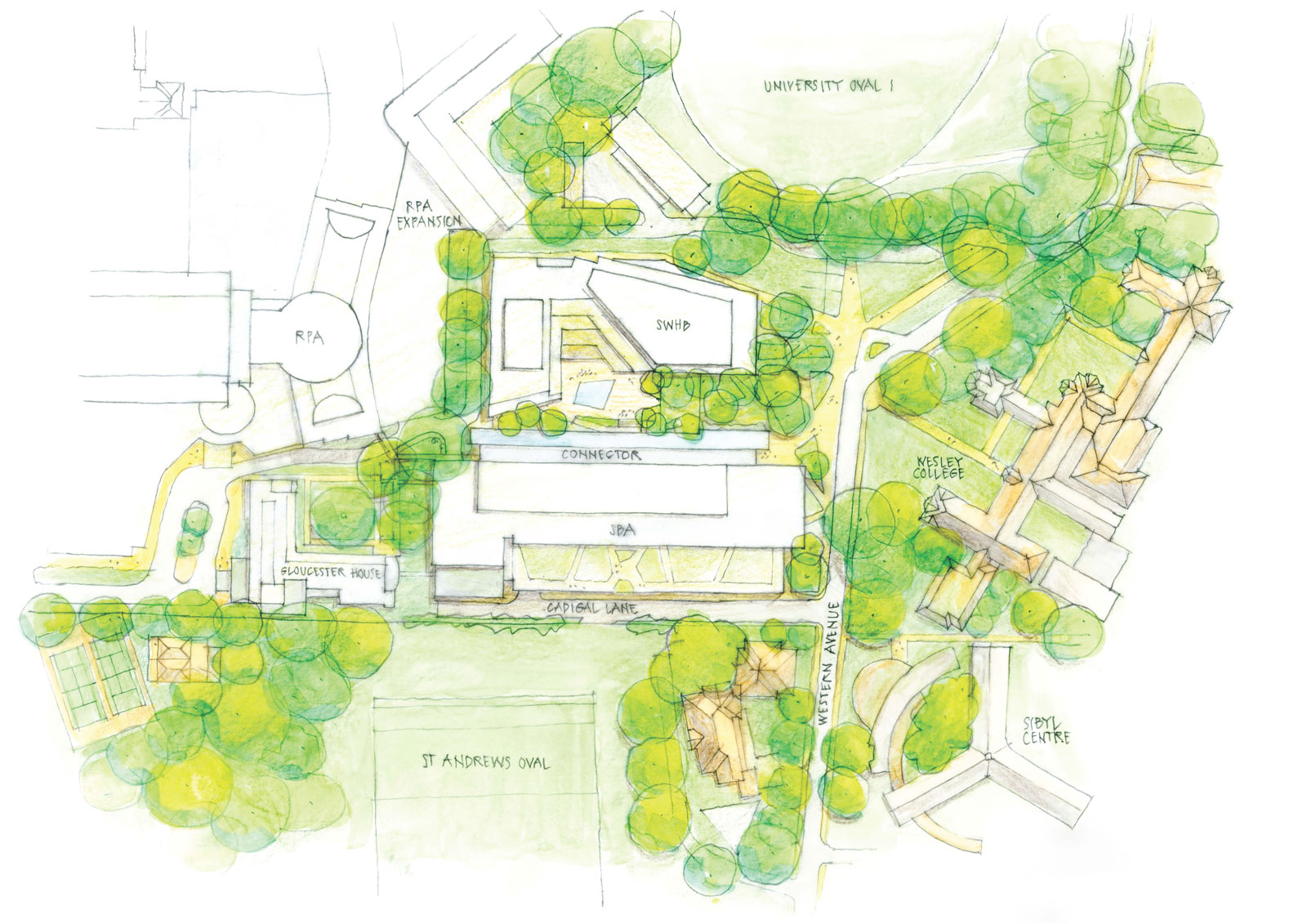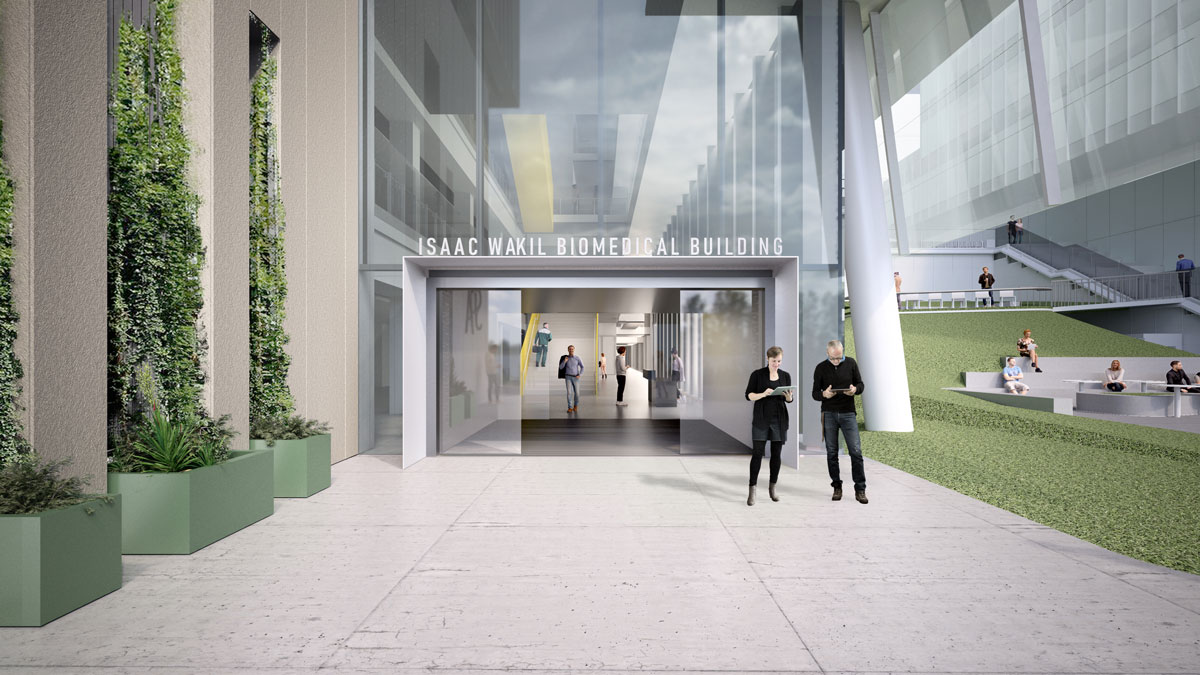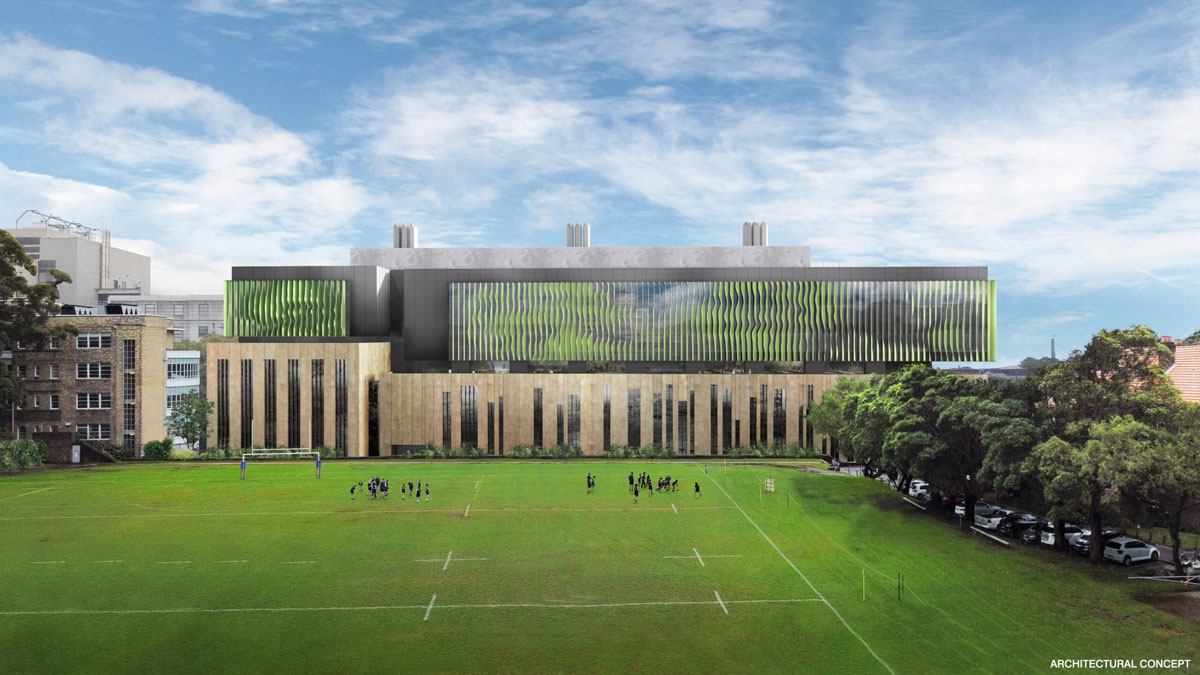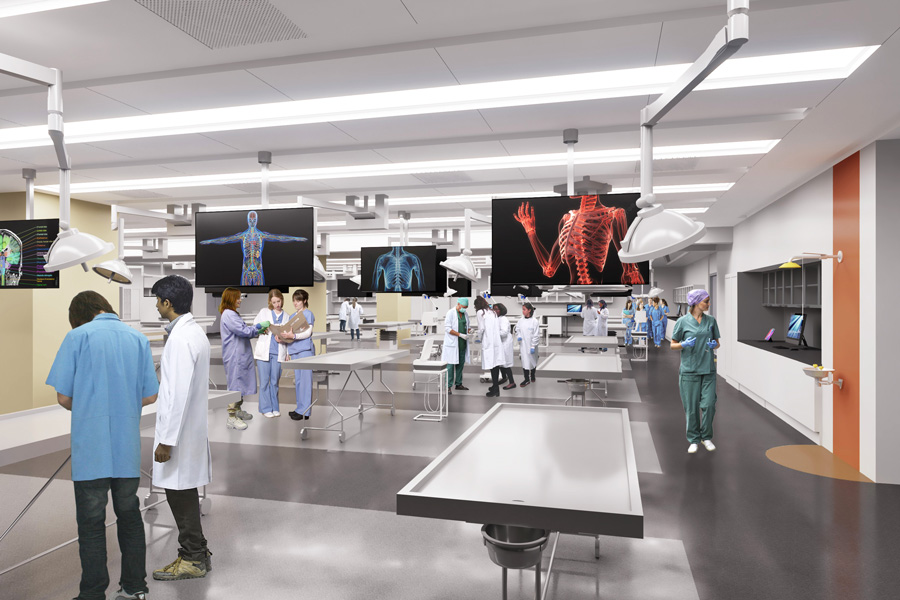About us
SYDNEY BIOMEDICAL ACCELERATOR
Built on 140 years of collaboration
The University of Sydney and Sydney Local Health District are two of the pre-eminent institutions in biomedical research and teaching in NSW, Australia. Our partnership, that has fostered the Sydney Biomedical Accelerator (SBA), is built on over 140 years of teaching and research collaboration.
Both institutions are internationally recognised, with Royal Prince Alfred Hospital (RPA) identified as Australia’s premier hospital* in 2023 and ranked in the top 100 globally for the past four years. The University of Sydney is ranked 18th in the world and first in Australia for anatomy and physiology, cardiac and cardiovascular systems, clinical medicine, oncology and surgery. †
* Newsweek’s 2023 World’s Best Hospitals list

Our Story
RPA and the University are the largest asset holders and employers within the Tech Central precinct and are the anchor institutions within the Sydney Innovation Precinct for Health Education and Research (SIPfHER). Collectively, RPA and the University employ a large cohort of highly experienced, internationally recognised health care professionals and researchers. There are over twenty medical research institutes and centres of excellence between these institutions and a number of jointly appointed clinicians, health professionals and researchers. The University also has world-class research groups spanning science, medicine, health and engineering disciplines.
The existing campuses of RPA and the University already support globally significant collaborative translational research in chronic and lifestyle diseases at the Charles Perkins Centre, future-focused nanoscience with Sydney Nano, surgical innovation through the RPA Institute of Academic Surgery, and clinical trials with the NHMRC Clinical Trials Centre. Investing in infrastructure to support cutting-edge biomedical science will immediately increase the potential for generation of high-impact ideas and solutions.
Together, we have:
- Trained generations of Australia’s best healthcare professionals
- Pioneered advanced surgeries
- Co-appointed leading clinician researchers
- Created lasting landmark research infrastructure
- Led Australia in healthcare delivery, training and research
- Led Australia in academic clinical trials
- A number of significant research, academic and industry collaborators
The Sydney Biomedical Accelerator (SBA) will capitalise on the strengths of the University and the District, providing a unique opportunity to attract existing and new industry collaborations and embedding commercialisation within the Camperdown research ecosystem.

The SBA Complex
The new building on University of Sydney grounds, the Isaac Wakil Biomedical Building is funded by the University including through generous philanthropy. The second new building (currently building B) and the refurbished Gloucester House are funded by Sydney Local Health District.
International architecture firms Denton Corker Marshall and HDR are the selected architects to design the integrated health education and research facilities. Works are already underway, and initial occupation is expected from 2027.

SYDNEY BIOMEDICAL ACCELERATOR
State-of-the-art facilities
The SBA has been benchmarked against the world’s leading biomedical facilities such as the Karolinska Institute, the University of Toronto’s MaRS Discovery District and MassBio.
Facilities include:
- Wet laboratory spaces for researchers and industry (PC2 and PC3)
- Prototyping core research facility for development of medical devices and implants
- Modernised and consolidated biobank
- Good manufacturing practice cleanrooms
- High-performing computing and bioinformatics
- Leading edge omics and bioinformatics for precision medicine
- State-of-the-art surgery, mortuary and anatomy research and teaching
- Core research facilities for cytometry, microscopy, preclinical imaging, omics, organoids, drug discovery, protein production and purification
- Clinical trials and patient facing clinical spaces
- Collaboration spaces for researchers, clinicians, and industry partners, including an innovation and start-up hub

